Djiboutians
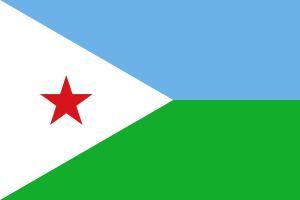 | |
| Total population | |
|---|---|
| c.921,000-935,000[a] | |
| Languages | |
| Somali,Afar,Arabic(Taʽizzi-Adeni),French | |
| Religion | |
| Islam(96%;Sunni·Sufism)[1] | |
| Related ethnic groups | |
| Eritreans,Ethiopians,Somalis,otherHorn Africans,and otherAfro-Asiatic(Cushitic people) populations |
TheDjiboutians(French:Djiboutiens) are the people inhabiting or originating fromDjibouti.The country is mainly composed of two ethnic groups, theSomaliand theAfar.It has many languages - thoughSomaliandAfarare the most widely spoken ones,ArabicandFrenchserve as the official languages. There is a small Djiboutian diaspora inNorth America,Europe,andAustralia.
Demographics[edit]
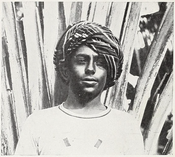
Djibouti has a population of about 884,017 inhabitants.[2][3]It is amultiethniccountry. The local population grew rapidly during the latter half of the 20th century, increasing from about 69,589 in 1955 to around 869,099 by 2015. The two largest ethnic groups are theSomalis(60%) andAfars(35%). TheSomali clancomponent is mainly composed of theIssa,followed by theGadabuursiand theIsaaq.[4]The remaining 5% of Djibouti's population primarily consists of DjiboutianArabs,Ethiopians and Europeans (French and Italians). Approximately 76% of local residents are urban dwellers; the remainder arepastoralists.[1]
| Ethnic composition of Djibouti 1927 - 2016 | |||||||||||
|---|---|---|---|---|---|---|---|---|---|---|---|
| 1927 | Population | 1983 | Population | 2016 | Population | ||||||
| Somali | 32,287 | Somali | 250,500 | Somali | 524,000 | ||||||
| Afar | 48,520 | Afar | 175,100 | Afar | 306,000 | ||||||
| Arabs | 4,135 | Arabs | 30,000 | Arabs | 59,000 | ||||||
| 84,942 | 455,600 | 846,687 | |||||||||
After thecivil warin 1991, many Djiboutians emigrated abroad. Most reside inEurope,North Americaand theMiddle East.
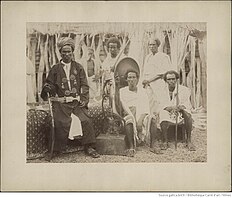
Culture[edit]
Djiboutians' culture is primarily rooted in Somali and Afar traditions. They speak differentCushitic languages,which are part of the largerAfro-Asiaticlanguage family. Historically, they have been nomadicpastoralists.However, recently the population has become urbanized - today, more than half live in thecapital,along with the nearby towns and villages of the interior. Poetry has been traditionally recited in the villages by special readers called gabaye. This was a way of recording the community's history and customs, as well as current events.
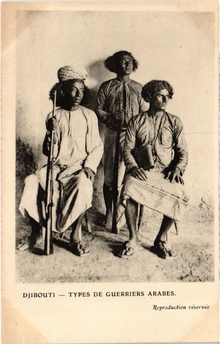
Cuisine[edit]
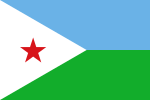 |
| Part ofa serieson the |
| Culture of Djibouti |
|---|
| Culture |
| People |
| Religion |
| Language |
| Politics |
|
|
Djiboutian cuisineis a mixture ofSomali,Afar,Yemeni,andFrench cuisine,with some additionalSouth Asian(especiallyIndian) culinary influences. Local dishes are commonly prepared using Middle Eastern spices, ranging fromsaffrontocinnamon.Spicy dishes come in many variations, from the traditionalFah-fahor "Soupe Djiboutienne"(spicy boiled beef soup), to theyetakelt wet(spicy mixed vegetable stew).Xalwo(pronounced "halwo" ) orhalvais a popular confection eaten during festive occasions, such asEidcelebrations or wedding receptions. Halva is made fromsugar,corn starch,cardamompowder,nutmegpowder, andghee.Peanutsare sometimes added to enhance texture and flavor.[5]After meals, homes are traditionally perfumed usingincense(cuunsi) orfrankincense(lubaan), which is prepared inside an incense burner referred to as adabqaad.
Music[edit]
Djiboutian music has Somali and Afar roots. Most Somali songs follow thepentatonic scale.That is, they only use fivepitchesperoctavein contrast to aheptatonic(seven note) scale, often found inWestern music.At first listen, Somali music might be mistaken for the sounds of nearby regions such as Ethiopia,Sudanor theArabian Peninsula,but it is ultimately recognizable by its own unique tunes and styles. Traditional Afar music resembles the folk music of other parts of theHorn of Africasuch asEthiopia;it also contains elements ofArabic music.The history of Djibouti is recorded in the poetry and songs of its nomadic people, and goes back thousands of years to a time when the peoples of Djibouti traded hides and skins for the perfumes and spices of ancientEgypt,India,andChina.Afar Oral Literature is also quite musical. Popular Djiboutian musicians includeNima Djama,Abdo Xamar Qoodh,Mohamed Ali Fourchette,Abdallah Lee,Said Xamar Qoodh,andXabiiba Cabdilaahi.
Cinema[edit]
Storytelling is an ancient custom in Djiboutian culture. This tradition is continued by a love of cinema. The earliest forms of public film display in Djibouti were inFrench.In the 1920s, the first local movie theaters opened, during a time whenDjibouti Citywas growing in size.[6]Film theaters became a place where local residents could watch movies in a relaxed atmosphere. With the development of the local film industry, additional theaters were launched. Among these establishments was theEdenin 1934,Olympiain 1939,Le Parisin 1965, andAl Hilalin 1975.
During the 1970s, the capital city had five movie theaters, with one in each district. A few local attempts at film making were also concurrently carried out with the participation of local actors. One of these wasBurta Djinka,a film inSomalidirected by G. Borg in 1972. Following independence in 1977, a growing number of government-owned production and distribution companies as well as actual projection theaters sprang up.
In the 1990s two of the biggest cinemas, Odeon and Olympia, closed their doors.[7]
Languages[edit]
The languages of Djibouti includeArabicandFrench(official), andSomaliandAfar(primary), which are the mother tongues of the Somali and Afar ethnic groups, respectively. Both languages belong to the largerAfro-Asiaticfamily.
Religion[edit]
Islamentered the region very early on, as a group of persecuted Muslims had sought refuge across theRed Seain theHorn of Africaat the urging of the Islamic prophet Muhammad. In 1900, during the early part of the colonial era, there were virtually noChristiansin the area, with only about 100–300 followers coming from the schools and orphanages of the few Catholic missions inFrench Somaliland.Islam is the driving force behind the unity of varying ethnic groups from different parts of the country, and has significantly shaped the values and traditions of Djibouti.
Notable Djiboutians[edit]
- Hassan Gouled Aptidon,first President of Djibouti from 1977 to 1999
- Mahmoud Harbi,vice-president of the Government Council ofFrench Somaliland
- Ahmed Dini Ahmed,Prime Minister of Djibouti from 1977 to 1978
- Dileita Mohamed Dileita,Prime Minister of Djibouti from 2001 to 2013
- Hussein Ahmed Salah,Marathon runner
- Jamal Abdi Dirieh,Athlete
- Ayanleh Souleiman,Professional athlete
- Mouna-Hodan Ahmed,Novelist
- Lula Ali Ismaïl,Djiboutian-Canadian film director
- Roda Ali Wais,Athlete
- Zeinab Kamel Ali,Politician
- Abdourahman Waberi,Novelist
- Abdo Xamar Qoodh,Musician
- Ismail Hassan,Footballer
- Abdi Waiss Mouhyadin,Athlete
- Daher Ahmed Farah,Politician
- Youssouf Hiss Bachir,Athlete
- Ahmed Goumane-Roble,Politician
- Abdourahman Waberi,Novelist
- Nima Djama,Musician
- Hasna Mohamed Dato,Politician
- Mumin Gala,Athlete
- Omar Farah Iltireh,Politician
- Yacin Elmi Bouh,Politician
- Aden Robleh Awaleh,President of theNational Democratic Party
- Mohamed Ali Fourchette,Musician
- Shanice Dileita Mohamed,Musician
- Moumin Bahdon Farah,Politician
Notes[edit]
- ^ab"Djibouti".The World Factbook.CIA.
- ^"World Population Prospects 2022".United Nations Department of Economic and Social Affairs,Population Division.RetrievedJuly 17,2022.
- ^"World Population Prospects 2022: Demographic indicators by region, subregion and country, annually for 1950-2100"(XSLX)( "Total Population, as of 1 July (thousands)" ).United Nations Department of Economic and Social Affairs,Population Division.RetrievedJuly 17,2022.
- ^Refugees, United Nations High Commissioner for."Refworld | Somalia: Information on the Issa and the Issaq".Refworld.Retrieved2021-10-10.
- ^Barlin Ali,Somali Cuisine,(AuthorHouse: 2007), p.79
- ^M. Guedi Ali Omar."Observatoire Culturel ACP: RAPPORT FINAL REPUBLIQUE DE DJIBOUTI"(PDF).Archived fromthe original(PDF)on 2016-08-22.Retrieved2016-07-13.
- ^M. Guedi Ali Omar."Observatoire Culturel ACP: RAPPORT FINAL REPUBLIQUE DE DJIBOUTI"(PDF).Archived fromthe original(PDF)on 2016-08-22.Retrieved2016-07-13.

